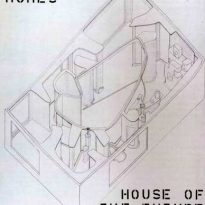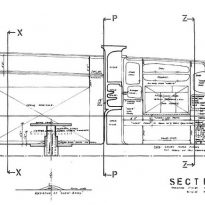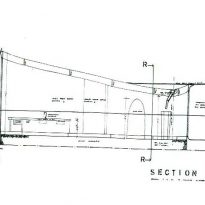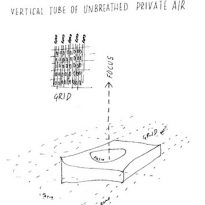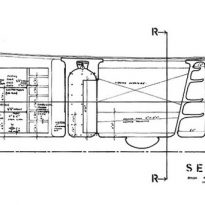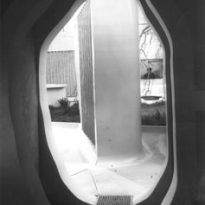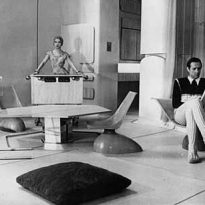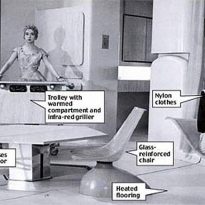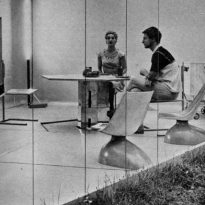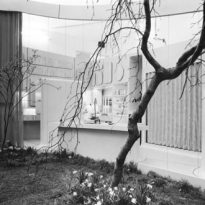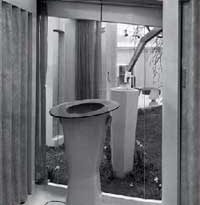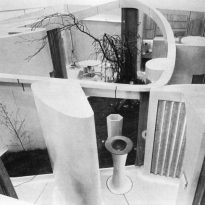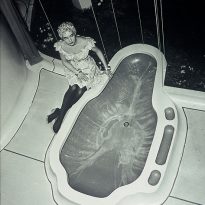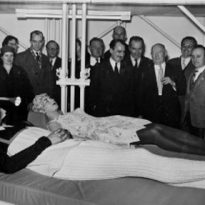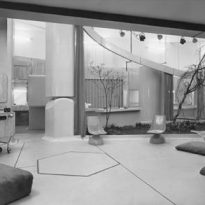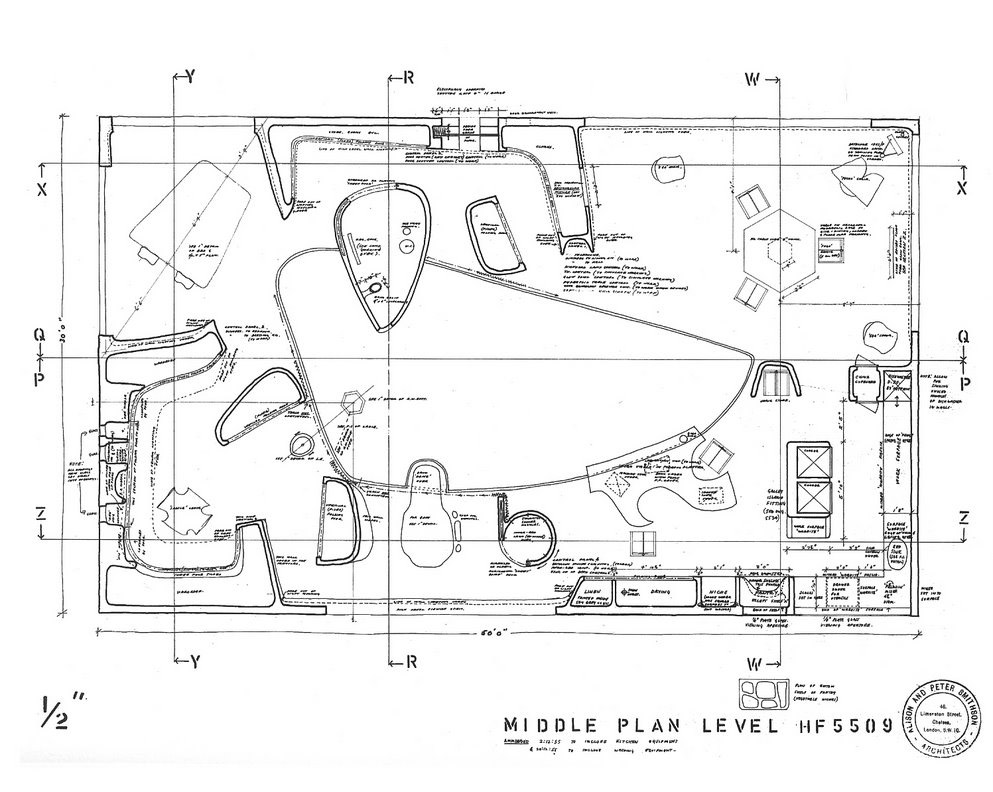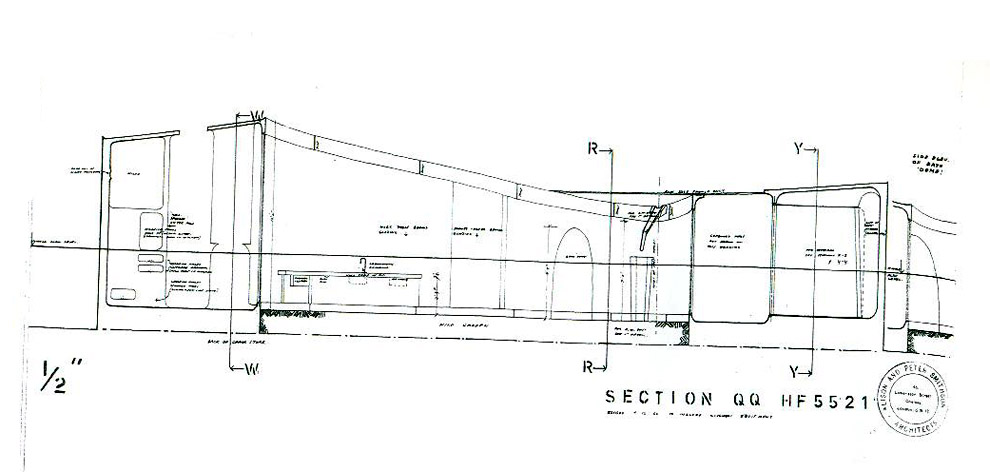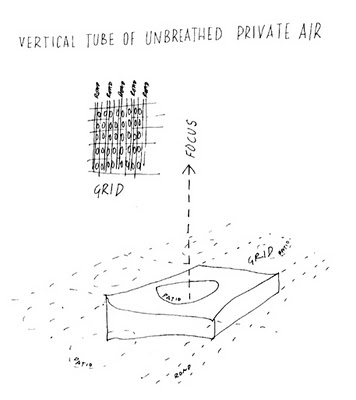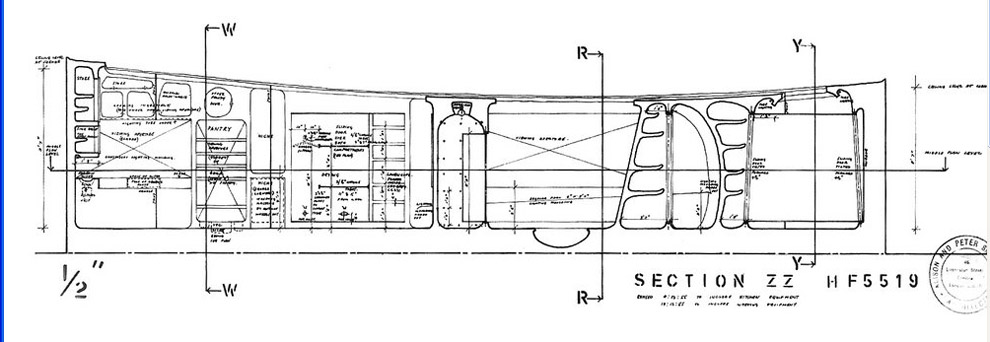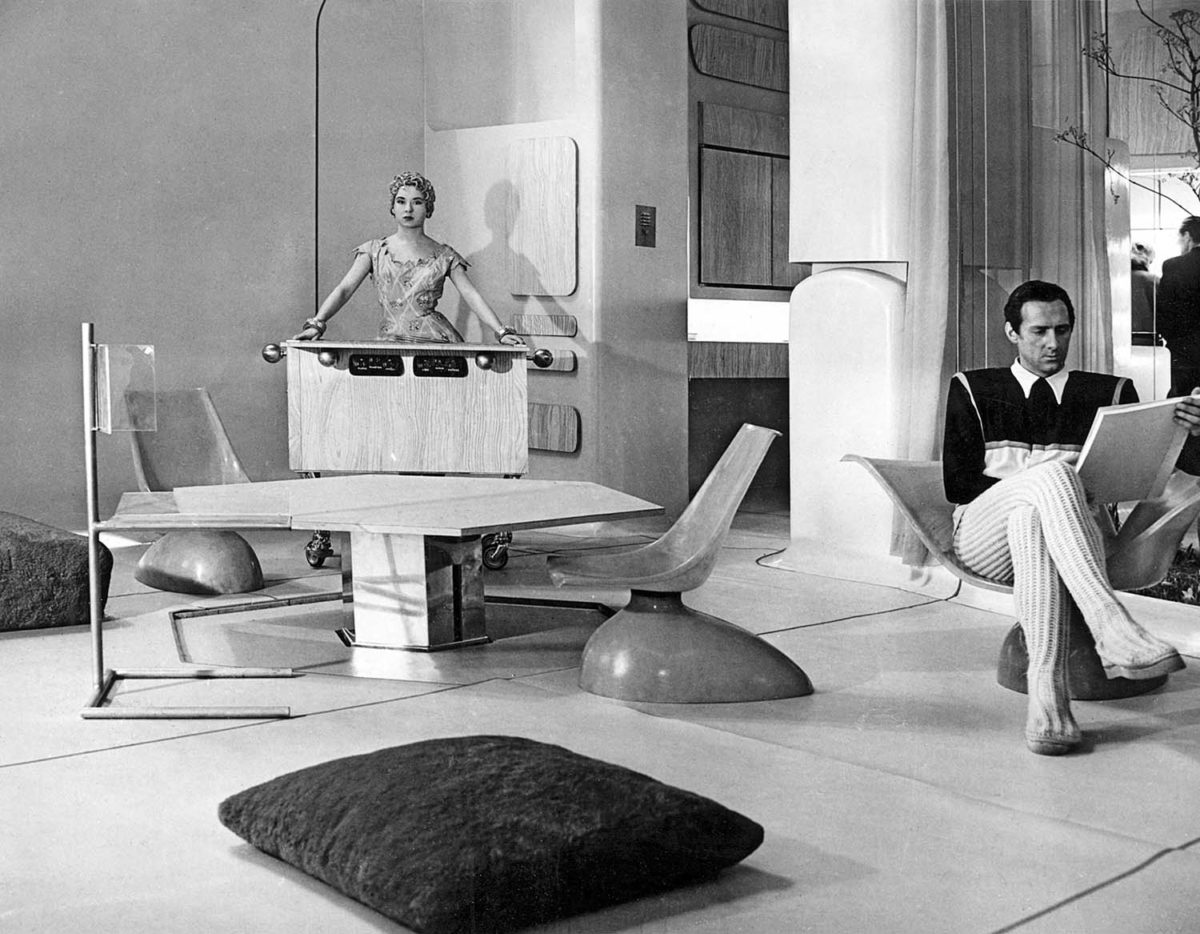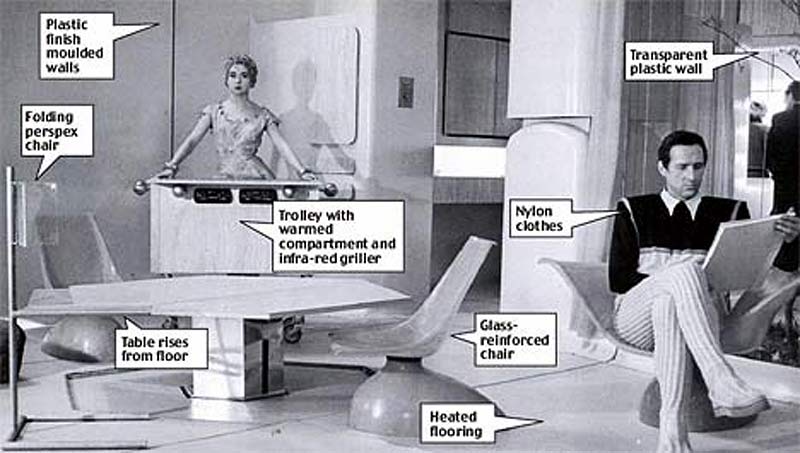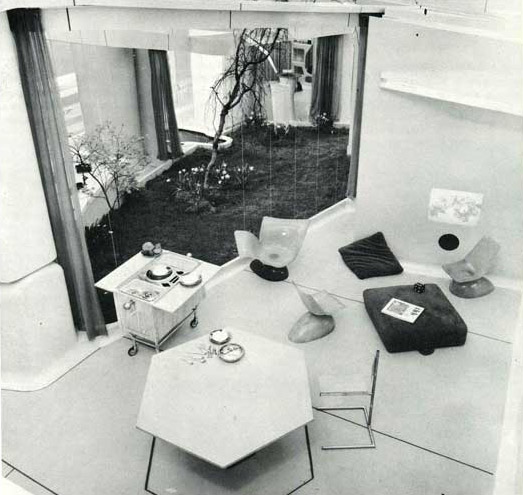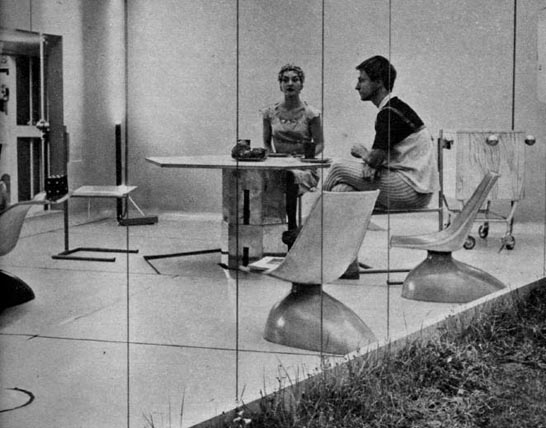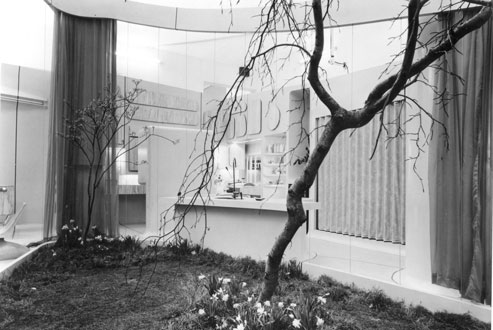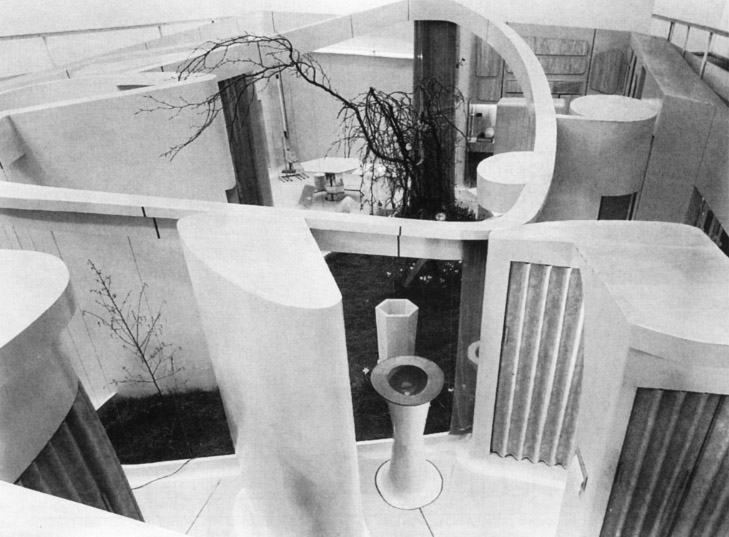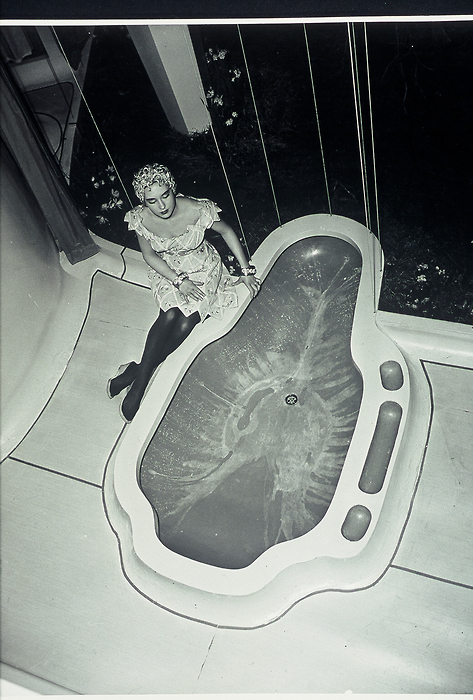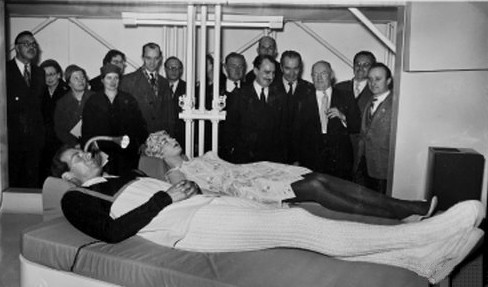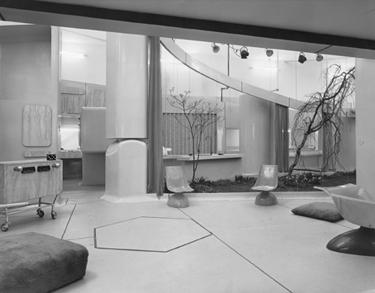House of the Future

Introduction
The House of the Future is one of the seven houses that were filed in 1956, forming the “people of today and tomorrow” in the exhibition every year esponsorizaba the Daily Mail and performing in the Kensington Hall in West London.
Marriage Smithson receives carte blanche as to project conventional suburban home would be after 25 years, in a time in history when there was a particular yearning for tech items and new generation. The sponsors asked return your items were installed in the house, the latest in kitchen accessories and appliances, as “an electrostatic dust collector” or a “speaker phone Tellaloud”.
This work of Alison and Peter Smithson is an example of the search for the two architects of the liberalizing promise of mass mobility, whose attainment wanted exalt with appropriate architectural framework.
Feeling glamorous
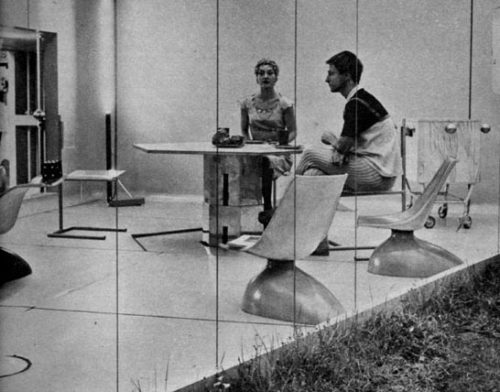
Throughout the exhibition by models dressed sportswear designer Teddy Tinling public cordially explaining the operation of various electronic devices and technological advances that had the house. In describing the picture, Alison Smithson wrote: “The general impression should be the public should be glamorous.” It was a fantasy house I had to give the impression of moldability, hence the curves in the walls, materials and colors used, furniture and clothing special models. The entire set required to achieve perceptual illusion sought.
Location
The exhibition was mounted where the House of the Future was held in Hall Kensington, West London, England.
Concept
The idea of the house of the future is clear and simple, is intended for a young couple without children. It was designed as part of an urban setting and high density compact, hence has no garden, feature conventional houses outside the big cities, but in return all living spaces were built around a small courtyard with a view to heaven.
Spaces
In the House of the Future no rooms, spaces are formed by sliding walls or cupboards that not only serve to store personal effects, sometimes hidden inside a shower regulated allowing hot air dry after bathing, and contain a sunlamp. This way of dividing the rooms makes the house can change their distribution according to the taste or the needs of their residents, creating organic forms that allow the rooms flow into each other.
Cooking
As in other structures of marriage Smithson design the kitchen was one of the points which gave much time, especially in a time when all innovations “hot” were destined for that part of the house.
- The oven was set at eye height, like the refrigerator, thus things are always easy to locate.
- In the kitchen, a closet was added to dry clothes, a washing machine and space for mobile sewing.
Sanitary
These are also important part of the house. Besides the built-in shower in a cupboard, the house has a bath lower level than the ground and easy to clean.
The room where the bathtub was placed a space of radical transparency, like the rest of the house, with a glass wall that creates a circle into the courtyard to let the inner tub in the house but also outside patio area.
Dressing
This is adjacent to the space devoted to the bedroom, where only a bed is placed.
Furniture and Materials
In bed no blankets, since the house automatically maintains a comfortable temperature.
Chairs and table

Noteworthy is the furniture also designed by Smithson marriage especially for the house:
- Pogo chair, high back
- Petal or tulip chair, which is actually an armchair.
- Egg chair, this is a low stool
- Saddle, it was specially designed to be placed in the locker
- Adjustable table, designed for the living room can be converted into a coffee table or can sink completely under the floor, using a remote control.
Walls
The walls are lined with a fibrous stucco accentuates the amorphous character of the environments, character is reinforced by the rounded corners, as if the house were a modern cave. These forms were simulated with plywood.
Lights Accessories
They are embedded in stucco siding and regulators have to allow them to adapt to the demands or even the mood of the moment.
